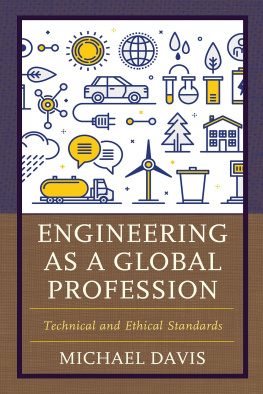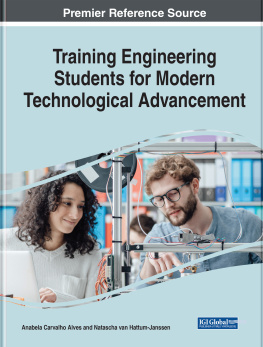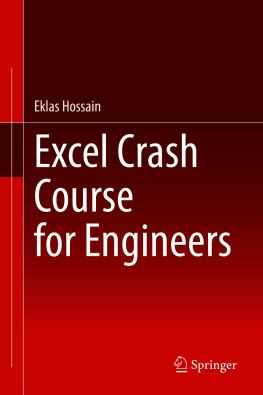A BROADCAST ENGINEERING TUTORIAL
FOR NON-ENGINEERS
Skip Pizzi is Senior Director of New Media Technologies at NAB, where he focuses on new methods for the creation and delivery of broadcast content. He is also Vice-Chair of ATSC Technology Group 3 (TG3), which is developing standards for the next generation of digital television. Previously he worked in multimedia for 11 years at Microsoft, served as an editor and contributor to several broadcast technology books and journals, and consulted to the professional, educational, and government sectors of the media industry worldwide. He began his career as an engineer, manager, and technical trainer at NPR. He is a recipient of the Audio Engineering Societys Board of Governors Award, and a graduate of Georgetown University, where he studied Electrical Engineering, Fine Arts, and International Economics.
Graham Jones retired in 2010 from NAB, where he was a Senior Director working on advanced television issues. He is still active in ATSC, SCTE, and SMPTE standards committees. Previously he was Engineering Director for the Harris/PBS DTV Express, which introduced DTV to many U.S. broadcasters. He started his career with the BBC in London, and has worked as a consultant to broadcasters in many parts of the world. He holds a degree in Physics and is a chartered electrical engineer, a fellow of SMPTE, and a life member of the SBE and the Royal Television Society. He has been honored with the Bernard J. Lechner Outstanding Contributor Award from the ATSC and received a citation from SMPTE for outstanding service to the society.
A BROADCAST ENGINEERING TUTORIAL
FOR NON-ENGINEERS
Fourth Edition
Skip Pizzi
Graham A. Jones

Third edition published 2005 by Focal Press
This edition published 2014
by Focal Press
70 Blanchard Road, Suite 402, Burlington, MA 01803
and by Focal Press
2 Park Square, Milton Park, Abingdon, Oxon OX14 4RN
Focal Press is an imprint of the Taylor & Francis Group, an informa business
2014 Taylor & Francis
The right of Skip Pizzi and Graham Jones to be identified as authors of this work has been asserted by them in accordance with sections 77 and 78 of the Copyright, Designs and Patents Act 1988.
All rights reserved. No part of this book may be reprinted or reproduced or utilised in any form or by any electronic, mechanical, or other means, now known or hereafter invented, including photocopying and recording, or in any information storage or retrieval system, without permission in writing from the publishers.
Notices
Knowledge and best practice in this field are constantly changing. As new research and experience broaden our understanding, changes in research methods, professional practices, or medical treatment may become necessary.
Practitioners and researchers must always rely on their own experience and knowledge in evaluating and using any information, methods, compounds, or experiments described herein. In using such information or methods they should be mindful of their own safety and the safety of others, including parties for whom they have a professional responsibility.
Product or corporate names may be trademarks or registered trademarks, and are used only for identification and explanation without intent to infringe.
Library of Congress Cataloging in Publication Data
Pizzi, Skip.
A broadcast engineering tutorial for non-engineers / Skip Pizzi, Graham Jones. 4th edition.
pages cm
Includes index.
1. RadioTransmitters and transmission. 2. TelevisionTransmitters and transmission.
3. Radio broadcasting. 4. Television broadcasting. I. Jones, Graham (Electrical engineer) II. Title.
TK6561.P59 2014
621.384-dc23
2013049657
ISBN: 978-0-415-73338-0 (hbk)
ISBN: 978-0-415-73339-7 (pbk)
ISBN: 978-1-315-84842-6 (ebk)
Typeset in Dante MT
By diacriTech, Chennai
Contents
There are many people without engineering backgrounds who need to have a general understanding of broadcast engineering principles. Reaching a large range of devices from TV screens and clock radios to smartphones and digital dashboards, todays broadcasting brings together a wide range of professionals, both technical and non-technical, all working within its vast and omnipresent ecosystem. They may be broadcast managers, program producers, or others who deal with broadcast clients. It is important that they all share some level of knowledge about the workings of broadcast technology.
This tutorial is therefore intended to help such non-engineers seeking to learn about the technology of radio and television. It should also be useful for broadcast engineers in training, or those in technical occupations (such as IT) who find themselves involved with broadcast operations, or who simply want an overview of areas outside their primary expertise. This book explains the jargon of broadcasting and describes the underlying principles, standards, and equipment for broadcast facilities in terms a layperson can understand.
The fourth edition has been completely revised and updated to reflect the increasing use of digital and networking techniques in all aspects of television and radio broadcasting. New chapters have been added to provide an overview of new-media applications by broadcasters and emerging standards in the broadcast industry. The focus is on over-the-air broadcasting from U.S. radio and television stations, but other methods of program delivery to the home are also covered, along with some of the different standards and technologies used in other countries.
Although later chapters build on information in earlier sections, this book can also be consulted for discrete information about a particular topic, and is copiously cross-referenced. However it is used, the overall goal of this book is to help readers further their understanding of the broadcast industry, and thus enhance their ability to perform the broadcast-related functions of their jobs.
Skip Pizzi
NAB Technology Department
____________
Broadcasting is a communications service that possesses two fundamental and unique attributes: (1) Broadcasting is a point-to-multipoint service, meaning that a broadcast service originates from a single transmitter but is receivable by an unlimited number of receivers within the coverage zone of that transmitter. (Compare this to a point-to-point communications system, such as telephony, in which one device typically connects only to a single device at any given time.) (2) Broadcasting is a unidirectional service, meaning that it carries content only in a one-way pathfrom the broadcast stations transmitter to the listeners or viewers receiverwith no provision for carrying signals back the other way. (Compare this to a bidirectional communications system, such as telephony, in which each users device serves as both a transmitter and a receiver, and content can flow between users in both directions simultaneously.) These two characteristics have defined broadcasting since its origin and continue to do so today. Thus, all the systems described in this book will possess these two essential qualities.
Meanwhile, the business of Broadcasting has evolved to include its own two primary functions: (1) The generation of audio or audiovisual media content, and (2) the delivery of such content to audiences. All broadcasting facilities are organized around one or both of these two processes. Radio and television stations typically include one of each type of facilities. Often these are placed at two different physical locations, but occasionally they are collocated.










